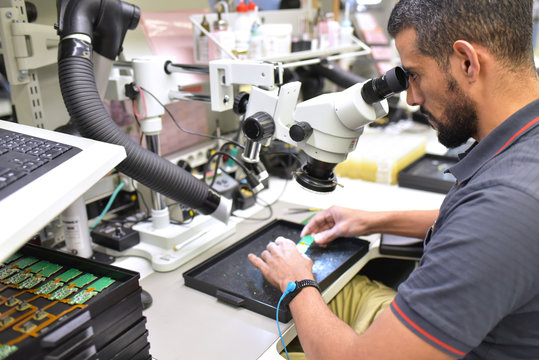
In today’s fast-paced technological landscape, microelectronics plays a pivotal role in shaping our world. From smartphones and laptops to medical devices and automotive systems, microelectronics has infiltrated every aspect of our lives. This article explores the definition, benefits, and insights into microelectronics circuits, shedding light on the fascinating world of tiny, powerful electronic components.
1. Introduction to Microelectronics (H1)
Microelectronics is the branch of electronics that deals with the design and manufacture of tiny electronic components and circuits. These components are often microscopic in size but carry out critical functions in electronic devices.
2. Defining Microelectronics (H2)
At its core, microelectronics involves the study and development of electronic systems at a very small scale. It focuses on the fabrication of miniature electronic components and their integration into complex circuits.
3. Historical Perspective (H2)
The history of microelectronics dates back to the mid-20th century when transistors were first invented. This breakthrough led to the miniaturization of electronic components and paved the way for modern microelectronics.
4. The Advantages of Microelectronics (H2)
Microelectronics offers several advantages, including reduced size, lower power consumption, and improved performance. These benefits have revolutionized the electronics industry.
5. Applications of Microelectronics (H2)
Microelectronics finds applications in a wide range of industries, from consumer electronics to healthcare and aerospace. It is the driving force behind innovations in these sectors.
6. Key Components in Microelectronics (H2)
To understand microelectronics, one must grasp the significance of key components, such as transistors, diodes, and capacitors.
7. Integrated Circuits (ICs) – The Heart of Microelectronics (H3)
Integrated circuits, or ICs, are the central components of microelectronics. They contain thousands or even millions of transistors on a single chip.
8. Transistors: The Building Blocks (H3)
Transistors are the fundamental building blocks of microelectronics. They amplify or switch electronic signals and are essential for digital logic.
9. Microelectronics vs. Macroelectronics (H2)
A notable distinction exists between microelectronics and macroelectronics, with microelectronics focusing on small-scale components and macroelectronics dealing with larger, conventional electronics.
10. Challenges and Innovations (H2)
Microelectronics faces challenges such as heat management and reliability. However, ongoing innovations continue to address these issues.
11. Designing Microelectronics Circuits (H2)
The design process for microelectronics circuits requires precision and expertise. Engineers carefully layout circuits to optimize performance.
12. Miniaturization: A Driving Force (H2)
The relentless pursuit of miniaturization has led to the development of incredibly small yet powerful electronic devices.
13. Microelectronics in Everyday Life (H2)
From smartphones that fit in our pockets to medical implants that save lives, microelectronics has become an integral part of our daily existence.
14. Future Trends in Microelectronics (H2)
The future of microelectronics holds promises of even smaller components, increased energy efficiency, and novel applications.
15. Conclusion (H1)
Microelectronics has transformed the world of electronics, enabling the creation of compact, efficient, and powerful devices. Its impact on various industries and everyday life is undeniable.